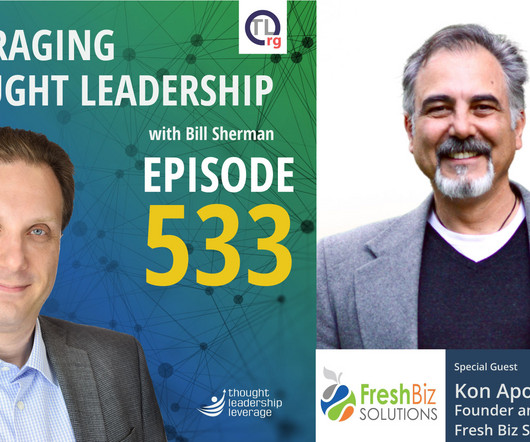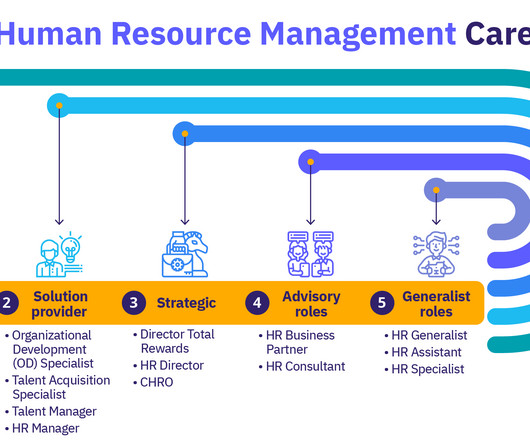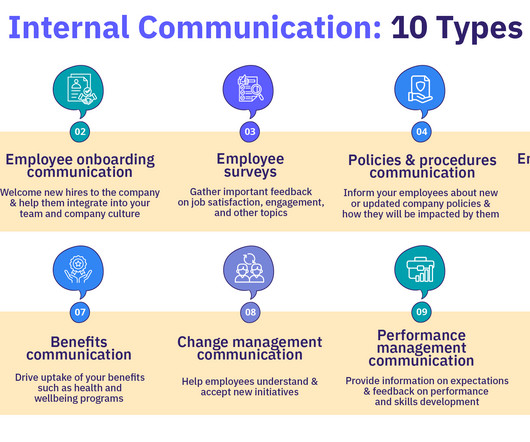Diving Into the World of Thought Leadership | Kon Apostolopoulos
Peter Winick
NOVEMBER 27, 2023
Kon takes us through a series of milestones, including publishing his first book, having to take that material to scale, and finding success that had his audience asking new questions — forcing him to continually expand his thinking and problem-solving.



















Let's personalize your content